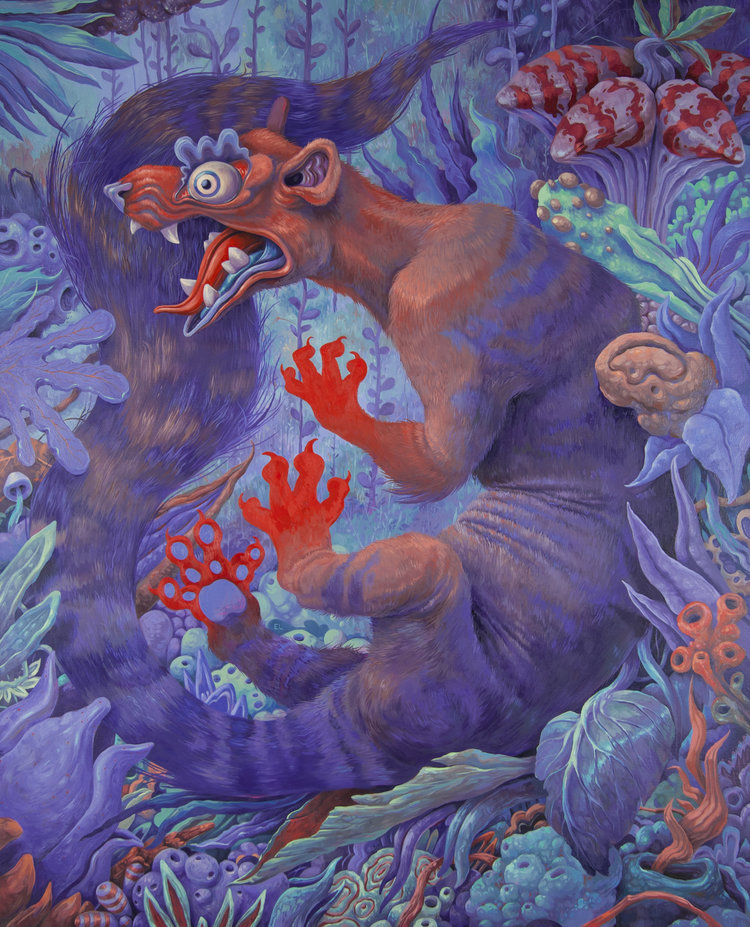
Seattle-based artist Mary Iverson creates oil paintings that both celebrate nature and comment on our problematic choices surrounding it. Slashes and geometric shapes obscure parts of the pristine backdrops depicted by the artist, using an X-acto knife to cut through her initial creations. Here, sites like the California coast and Mount Rainier are overcome by shipping containers and similar, intrusive objects. Iverson was last featured on cctvta.com here. Iverson was featured in Hi-Fructose Vol. 21.




The artist maintains that her latest body of work, “Eden,” comments on the moment between creation and destruction. “By destruction, I mean climate change and the resulting loss of our earthly paradise,” Iverson says, in a statement. “We know what to avoid doing, but we are doing it anyway. To avoid irreversible climate change, we need to invest in renewable energy instead of fossil fuel extraction infrastructure. But we just elected a president that has promised to bolster the oil industry.”




In addition to climate change, she’s also commenting on the role that commerce plays in this process. “Eden currently occupies Chandran Gallery in San Francisco, running through Feb. 5. The artist’s mural projects, located throughout the U.S. Northwest, makes use of the artist’s knack for geometric forms.





 Evan Lovejoy's paintings are inspired by both the artist's love of the natural world and his anguish due to its destruction. Our complicated relationship with animals is shown through the artist's varying ways of depicting them. Within the same work, a beast moves between a sense of realism, cartoonish rendering, and a more pop-surrealist sensibility.
Evan Lovejoy's paintings are inspired by both the artist's love of the natural world and his anguish due to its destruction. Our complicated relationship with animals is shown through the artist's varying ways of depicting them. Within the same work, a beast moves between a sense of realism, cartoonish rendering, and a more pop-surrealist sensibility. The flesh takes a leading role in the art of
The flesh takes a leading role in the art of 
 French pair
French pair